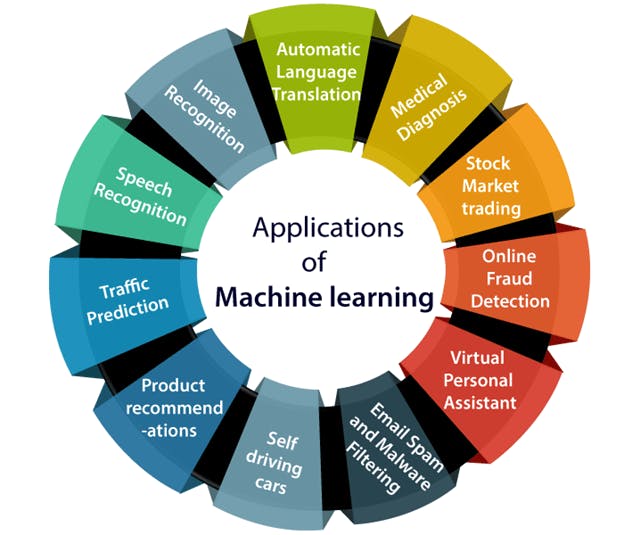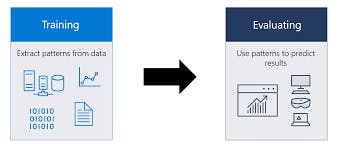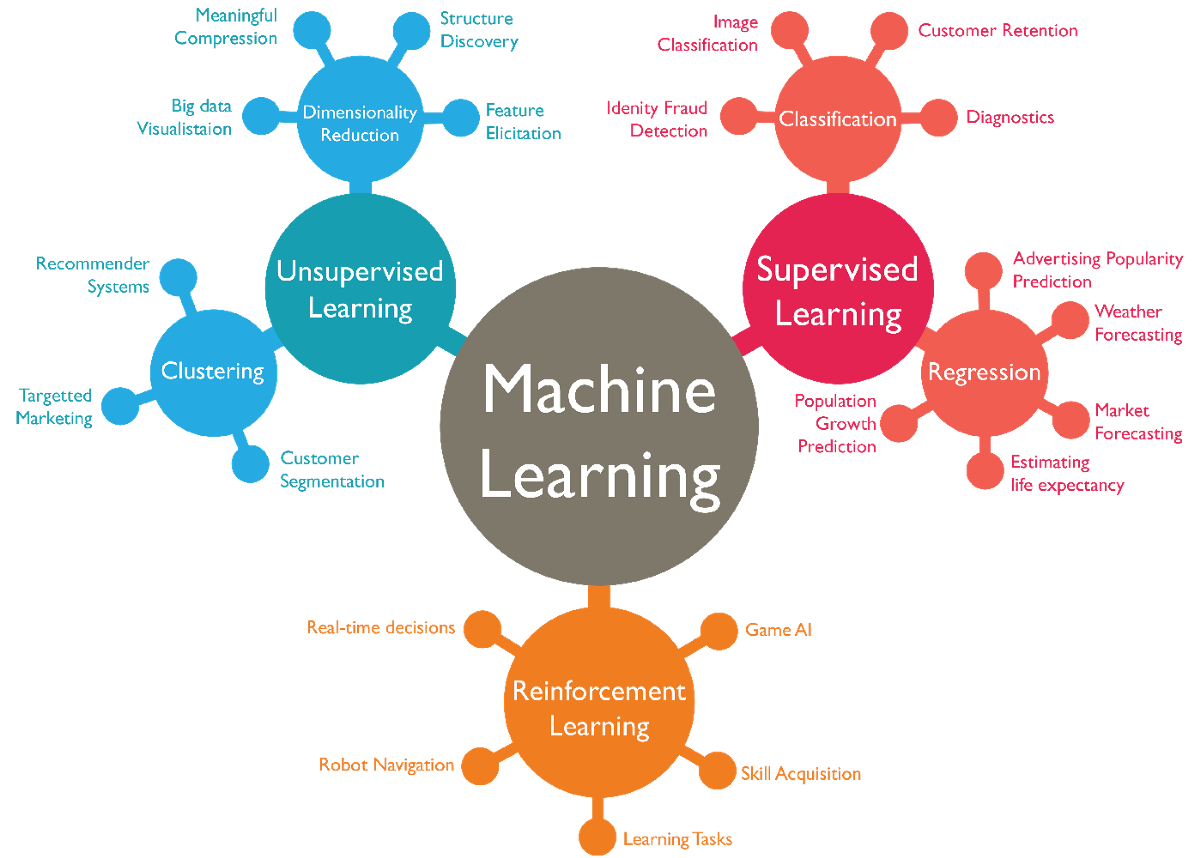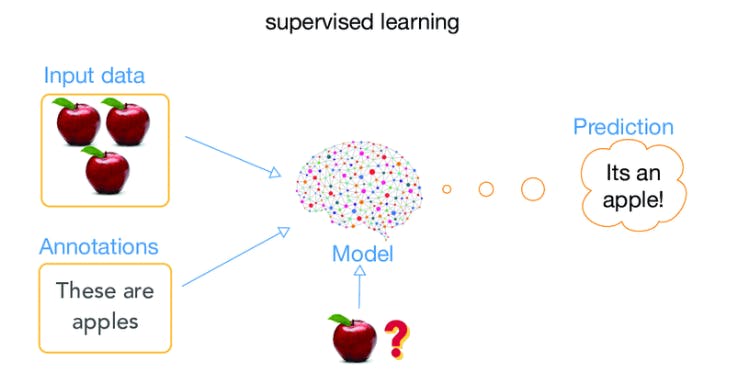What is Machine Learning?
Machine learning is a subset of artificial intelligence that involves developing algorithms that can learn patterns and relationships from data. As a software engineer, you can use machine learning to create intelligent software that can automatically improve and adapt based on data.
Machine learning algorithms are designed to identify patterns and make predictions or decisions based on data. It is a way through which business questions get answered using data.
The following infographic shows various ways in which Machine Learning is being put to use:

source: javatpoint.com/applications-of-machine-lear..
Basic Terminologies in Machine Learning
Data
It is the driving force for Machine Learning. It comes in the form of words and numbers stored in tables or as the values of pixels and waveforms captured in images and audio files. Related data is stored in datasets.
Model
A mathematical relationship derived from data that a Machine Learning system uses to make predictions.
Training
This is a process through which a model is presented with a lot of similar data in order to find connections or correlations in it that enable the model to make predictions.
Therefore Machine Learning(ML) is the process of training(learning) a piece of software(tool) called a model, to make useful predictions from data.
How it works...
A machine learning model is given enormous amounts of data to gradually learn from it and find connections in that data that will enable it to make predictions. The ML model is then given current data to predict the desired output. For example on Youtube, the model that performs recommendations learns from your choice of videos, and with that data, it can recommend a video(s) similar to your previous history and in case of any changes, it adjusts accordingly.

source: learn.microsoft.com/en-us/windows/ai/window..
A model is a mathematical relationship derived from the data that a Machine Learning system uses to make predictions. The more the model is fed with data, the better it performs because it keeps learning and stands a high percentage of making a correct prediction.
Types of Machine Learning Algorithms

source: 7wdata.be/visualization/types-of-machine-le..
There are three distinct categories of ML systems based on how they learn to make predictions:
Supervised Learning
Unsupervised Learning
Reinforcement Learning
Supervised Learning
Here, models are fed with lots of data that have correct answers. From this data, the models discover the connections between the elements in the data that produce the correct answers, then can make predictions.
We can use an analogy of students preparing for an examination to explain this:
- Students will practice using different old question papers that have answers, after interfacing with so many of them, they are ready to do an examination that has a new set of questions that they have to provide correct answers.
It is supervised in such a way that a human gives the ML system data with the known correct results.

source: images.app.goo.gl/otptbMoTaozdjgPeA
Using this example of a model that predicts whether the fruit is an apple, the model is trained using images of apples with annotations to define them, and then it is tested with an image of an apple that does not have an annotation to check if it will be able to predict it.
Common use cases for supervised learning:
- Regression
A regression model predicts a numerical value eg. a weather model that predicts the amount of rain in milliliters, is a regression model.
- Classification
Classification models predict the likelihood that something belongs to a category. Classification models output a value that shows whether or not something belongs to a particular category eg. predicting if the pet is a cat or a dog.
It has two categories:
- Binary Classification
Models produce a value from a class that contains only two values, eg. a model that outputs an answer to a yes or no question.
- Multiclass Classification
Models output a value from a class that contains more than two values, eg a model that can output either yes, no, maybe, or I don't know.
Unsupervised Learning
Unsupervised learning models make predictions by being given data that does not contain any correct answers. Its goal is to identify meaningful patterns among the data. To find groupings in the data.
The commonly used unsupervised learning model employs a technique called clustering.
In clustering, the model finds data points that demarcate natural groupings.
Clustering differs from classification because the categories aren't defined by you.

source: images.app.goo.gl/otptbMoTaozdjgPeA
Using this example of a model that predicts whether the kind of fruit, the model is trained using different images of fruits without annotations, and then it finds groupings of these images.
Reinforcement Learning
Reinforcement models make predictions by getting rewards or penalties based on actions performed within an environment.
A reinforcement learning system generates a policy that defines the best strategy for getting the most rewards.
Reinforcement learning is used to train robots to perform tasks, like walking around a room, and software programs like AlphaGo to play the games of Go.
Please enjoy the read... Don't forget to give me a thumbs up and leave a comment about your experience with my article and in case of any questions.
Watch out for my next article on SUPERVISED LEARNING...